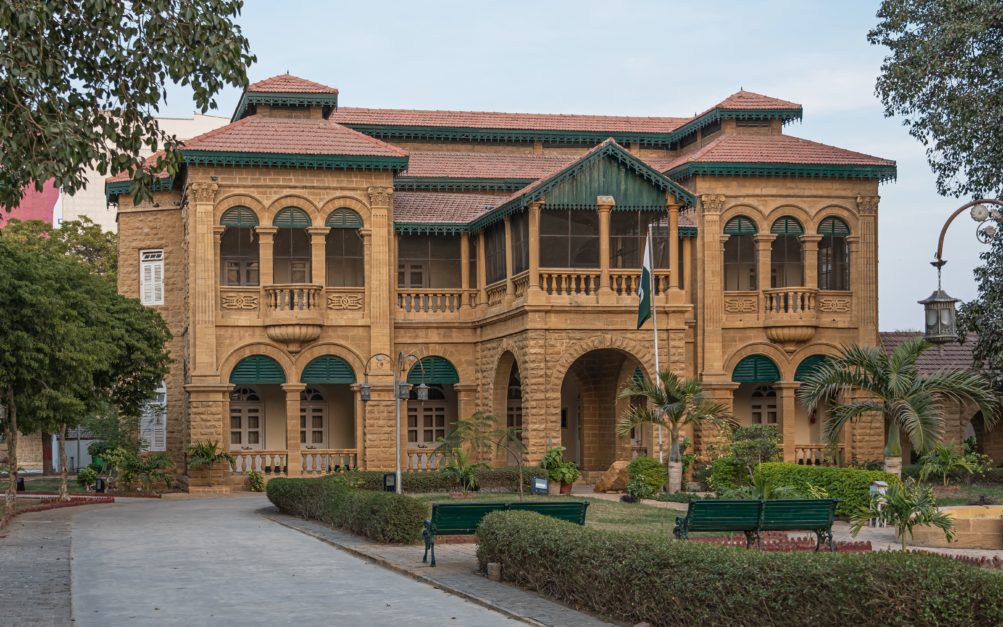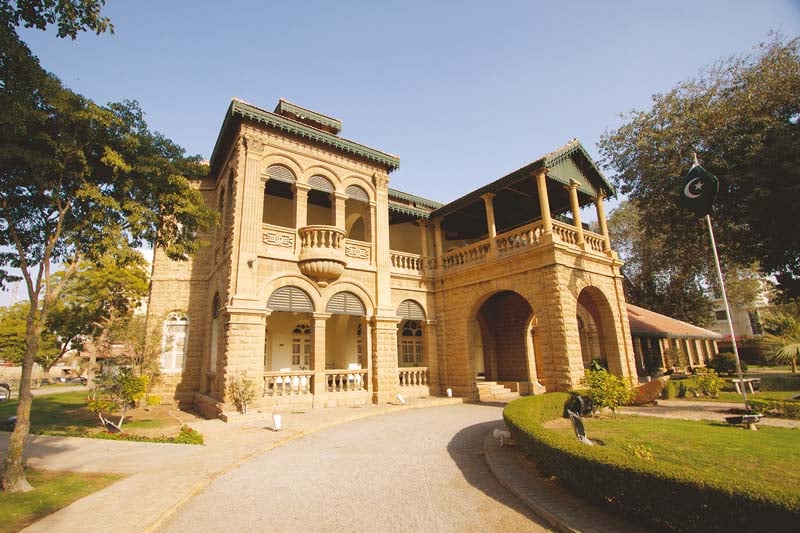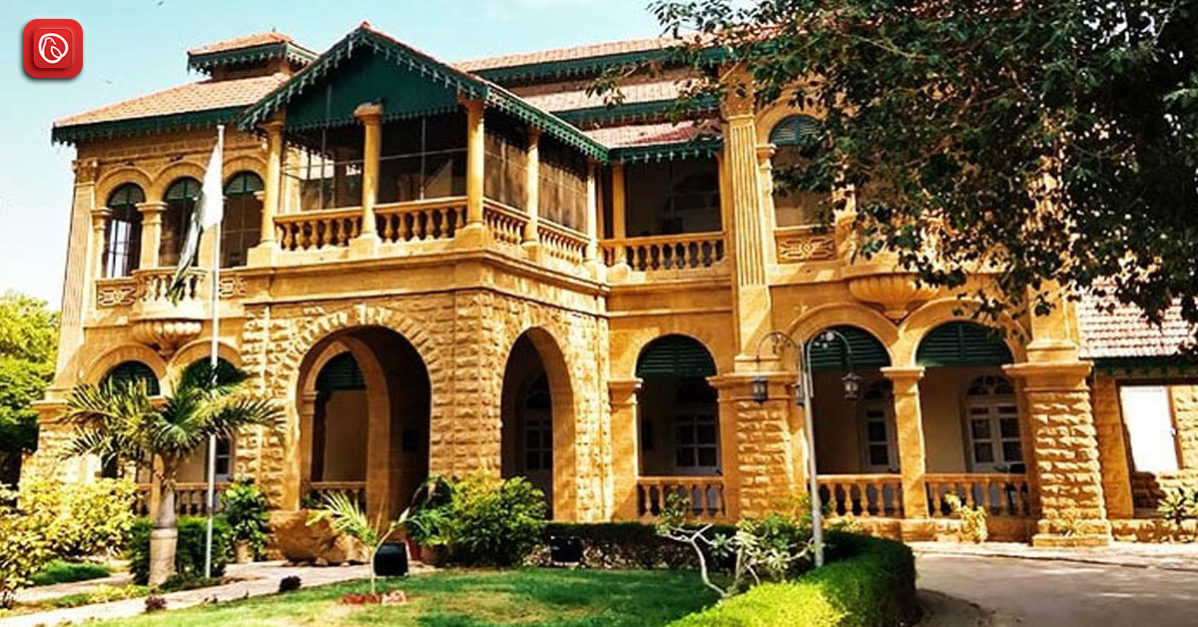Quaid-e-Azam House Museum, also known as the Flagstaff House, is a historical museum dedicated to Muhammad Ali Jinnah, the founder of Pakistan. Located in Karachi, the museum is housed in a building that was once Jinnah’s residence.
In this blog, Graana.com will discuss everything you need to know about Quaid-e-Azam House, including historical background, location and visiting information.
Historical Background

The Quaid-e-Azam House Museum, also known as the Flagstaff House, holds immense historical significance as the former residence of Muhammad Ali Jinnah, the founder and one of the most famous personalities of Pakistan. Jinnah acquired this house in 1943 when Karachi was still part of British India. At the time, Jinnah was deeply involved in the political struggle for an independent Muslim state, and the house served as his personal sanctuary amidst his hectic political life. Built in the colonial architectural style, the residence is an embodiment of the period’s aesthetic, characterised by spacious rooms, high ceilings, and expansive verandas. The architectural blend of local and European elements reflects the transitional period of South Asian history during the mid-20th century.
After Jinnah’s death in 1948, the house remained in the possession of his sister, Fatima Jinnah, who also played a significant role in the Pakistan independence movement. Recognizing its historical value, the government of Pakistan eventually took over the property. In 1985, it was officially converted into a museum dedicated to preserving and showcasing the legacy of Muhammad Ali Jinnah. The transformation of the house into a museum ensured that future generations could gain insights into the life of the man who spearheaded the creation of Pakistan, providing a tangible connection to the country’s formative years.
The Quaid-e-Azam House Museum now stands as a monument to Jinnah’s vision and leadership. It serves as an educational resource, offering visitors a detailed look at Jinnah’s personal and professional life through carefully preserved artefacts, documents, and photographs. The museum’s establishment was part of a broader effort to preserve Pakistan’s national heritage and to honour the memory of its founding father.
Museum Exhibits
The Quaid-e-Azam House Museum is rich with exhibits that offer an intimate glimpse into the life and times of Muhammad Ali Jinnah. One of the primary attractions is the collection of Jinnah’s personal belongings, which includes his clothing, accessories, and everyday items. These artefacts provide a personal touch, allowing visitors to connect with Jinnah on a human level. Among the notable items are his suits, shoes, and other personal effects that reflect his sophisticated taste and meticulous nature. The display of these belongings helps illustrate the personal side of a man often viewed through the grand lens of history.
In addition to personal items, the museum houses a comprehensive array of photographs and documents that chronicle significant events in Jinnah’s career and the broader movement for Pakistan’s independence. These exhibits include rare photographs of Jinnah at various stages of his life, including pivotal moments such as his speeches, meetings with other leaders, and interactions with the public. Accompanying these visual materials are important documents like letters, official papers, and correspondence that provide insights into his strategic thinking and the political landscape of the time. These artefacts collectively offer a narrative of Jinnah’s journey from a prominent lawyer to the revered leader known as Quaid-e-Azam.
The museum also preserves the original furniture and decor from the time Jinnah lived there, maintaining the house in its authentic condition. Visitors can explore rooms furnished with Jinnah’s own belongings, such as his study with his writing desk, the dining room, and the living quarters, all arranged as they were during his residence. This immersive environment allows visitors to experience the ambience of the era and gain a sense of Jinnah’s daily life.
Significance

The Quaid-e-Azam House Museum holds profound significance as both a historical and educational landmark. It serves as a vital repository of Pakistan’s national heritage, offering an intimate glimpse into the life and legacy of Muhammad Ali Jinnah, the nation’s founding father. By preserving and showcasing Jinnah’s personal belongings, documents, and photographs, the museum provides a unique educational resource for visitors. It allows them to understand the complexities of Jinnah’s personality and his pivotal role in the creation of Pakistan. The museum’s exhibits offer insights into Jinnah’s vision, leadership, and the challenges he faced, making it an essential destination for students, historians, and anyone interested in the country’s history.
Beyond its educational value, the Quaid-e-Azam House Museum is a symbol of cultural pride and national identity. It stands as a testament to Jinnah’s enduring legacy and the ideals upon which Pakistan was founded. The preservation of this historical site ensures that Jinnah’s contributions are remembered and honoured, fostering a sense of national unity and continuity. The museum also plays a significant role in promoting historical awareness and appreciation among the public, encouraging reflection on the principles of freedom, democracy, and justice that Jinnah championed. Lastly, as a place of homage and learning, the Quaid-e-Azam House Museum continues to inspire and inform, connecting the past with the present and future generations. All this makes it one of the top museums in Karachi.
Location and Visiting Information
The Quaid-e-Azam House Museum is situated in Karachi, Pakistan, on Fatima Jinnah Road (formerly known as Bonus Road). This prime location makes it easily accessible to both locals and tourists visiting the city. The museum’s central position in Karachi places it near other historical and cultural landmarks. It enhances its appeal as a key destination for those interested in exploring Pakistan’s rich heritage.
Address: Quaid-e-Azam House Museum, Fatima Jinnah Road, Karachi, Pakistan.
Visiting Hours: The museum is typically open to visitors from Tuesday to Sunday. It is advisable to check the specific visiting hours as they can vary. Usually, the museum operates from 9:00 AM to 5:00 PM, but it’s best to confirm before planning your visit.
Admission Fee: There may be a nominal entry fee for visitors. Details on the current admission fees can be obtained directly from the museum’s administration or official website.
Conservation Efforts
The conservation efforts at the Quaid-e-Azam House Museum are crucial for preserving its historical and cultural significance. These efforts are managed by the government of Pakistan, which recognizes the importance of maintaining the site both as a tribute to Muhammad Ali Jinnah and as an educational resource. Regular maintenance activities ensure the structural integrity of the building. This protects it from the wear and tear of time and environmental factors. This includes periodic inspections, repairs, and restorations that address any damage to the colonial-era architecture. By preserving the original design and materials as much as possible, the conservation efforts help maintain the authenticity of the museum, allowing visitors to experience the house as it was during Jinnah’s residence.
In addition to structural maintenance, significant attention is given to the preservation of artefacts and exhibits within the museum. Specialised conservation techniques are employed to safeguard Jinnah’s personal belongings, documents, and photographs from deterioration. This involves climate control measures to prevent damage from humidity and temperature fluctuations, as well as careful handling and storage practices. The museum staff, often in collaboration with experts in conservation, continuously works to enhance these methods to ensure the longevity of the artefacts. Through these comprehensive conservation efforts, the Quaid-e-Azam House Museum not only honours the legacy of Pakistan’s founding father but also ensures that future generations can continue to learn from and be inspired by this important historical site.
Frequently Asked Questions (FAQs)
Following are the most common questions and their answers about Quaid-e-Azam House Museum.
What is the Quaid-e-Azam House Museum?
The Quaid-e-Azam House Museum is a historical museum in Karachi dedicated to Muhammad Ali Jinnah, the founder of Pakistan. It was Jinnah’s residence from 1943 until his death in 1948.
Where is the Quaid-e-Azam House Museum located?
The museum is located on Fatima Jinnah Road (formerly Bonus Road) in Karachi, Pakistan.
What are the visiting hours of the museum?
The museum is generally open from Tuesday to Sunday, typically from 9:00 AM to 5:00 PM. It is advisable to check current visiting hours before planning your visit.
Is there an admission fee for the museum?
There may be a nominal entry fee for visitors. For the most accurate and current information, you should contact the museum directly.
What exhibits can visitors see at the museum?
Visitors can see a variety of exhibits including Jinnah’s personal belongings, photographs, documents, and original furniture. These exhibits provide a detailed look at Jinnah’s life and his role in the creation of Pakistan.
Are tour guides available at the museum?
Yes, tours are often available and are recommended for a more in-depth understanding of the exhibits and the historical context of Jinnah’s life.
Can visitors take photographs inside the museum?
Photography policies can vary. It is best to check with the museum staff regarding which areas permit photography and if any restrictions apply.
Is the museum accessible to people with disabilities?
The museum strives to be accessible, but visitors with specific accessibility needs should contact the museum in advance to inquire about available facilities and accommodations.
What is the significance of the Quaid-e-Azam House Museum?
The museum is significant as it preserves and showcases the personal life and legacy of Muhammad Ali Jinnah. It provides educational value and fosters national pride. It also serves as a cultural heritage site that honours Pakistan’s history.
How can visitors get more information about the museum?
Visitors can get more information by contacting the museum directly via phone. You can also visit its official website, or check its social media pages for updates and announcements.
To read about the PAF Museum in Karachi, visit Graana Blog.




